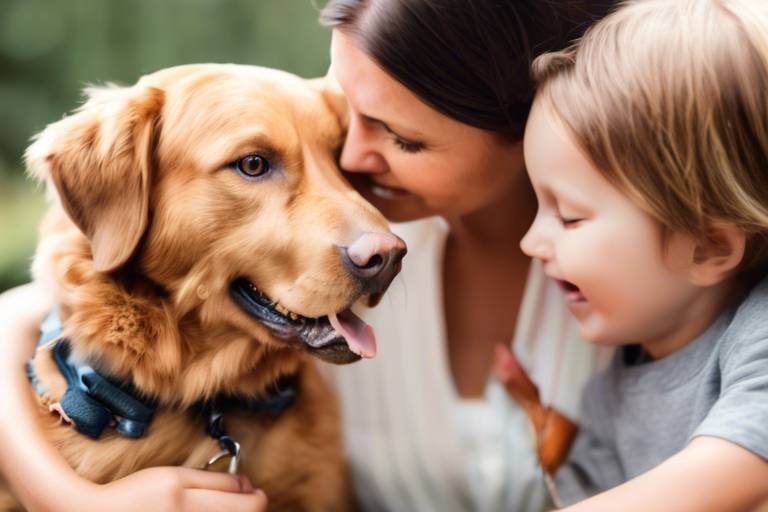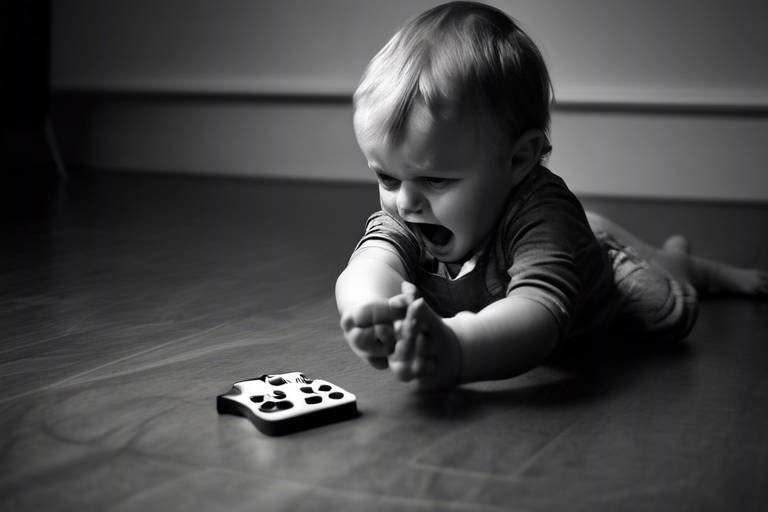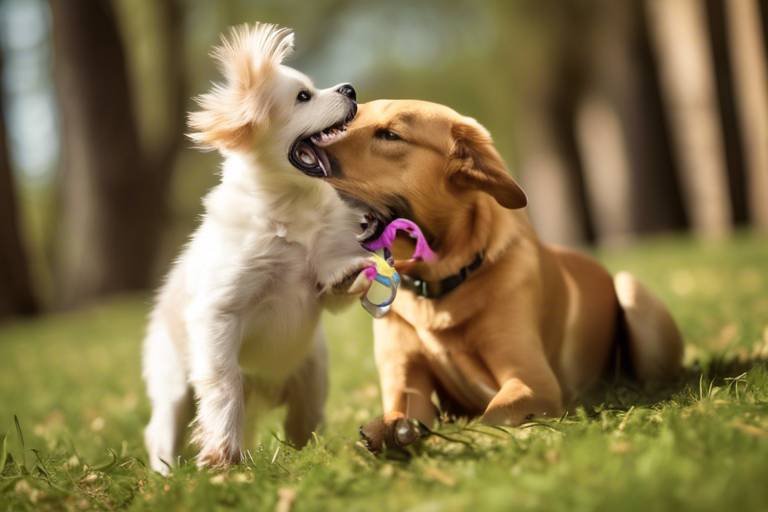Tips for Socializing Your Dog with Children
Socializing your dog with children can be one of the most rewarding experiences for both your furry friend and the little ones. However, it requires careful planning and understanding to ensure that interactions are safe and enjoyable. Imagine a world where your dog and your kids play together, creating memories filled with laughter and joy. Sounds amazing, right? But how do you get there? This article provides essential tips and strategies for effectively socializing your dog with children, ensuring a safe and enjoyable interaction for both pets and kids.
Before diving into the socialization process, it’s crucial to recognize your dog's body language and behavior. Dogs communicate through a variety of signals, and understanding these can make a significant difference in how they interact with children. For example, a wagging tail doesn’t always mean happiness; it can also indicate excitement or even anxiety. By learning to interpret these signals, you can create a more positive experience for everyone involved. Watch for signs such as:
- Tail Position: A relaxed tail indicates comfort, while a stiff or tucked tail may suggest fear.
- Ear Position: Ears perked up can show curiosity, whereas flattened ears may indicate submission or anxiety.
- Body Posture: A relaxed body posture is a good sign, while a rigid stance can signal discomfort.
By being attentive to these behaviors, you can better gauge your dog’s readiness to meet children and adjust your approach accordingly.
Timing plays a significant role in socializing dogs with children. You wouldn’t want to introduce your dog to kids after a long, stressful day, right? The best moments for introductions are when both your dog and the children are calm and relaxed. Think of it like setting the stage for a performance. If the environment is chaotic, the interaction is likely to be stressful. Create a calm atmosphere by:
- Choosing a quiet time when the kids aren't overly excited.
- Ensuring your dog has had enough exercise to be less energetic.
- Creating a distraction-free zone for the introduction.
By setting the right scene, you allow both your dog and the children to feel more at ease, paving the way for a smoother interaction.
Before introducing your dog to children, it’s important to evaluate their temperament. Every dog has unique traits that influence how they interact with others. Some dogs are naturally more tolerant and gentle, while others may be more excitable or nervous. Key traits to look for include:
- Calmness: Dogs that are generally calm are more likely to handle children's energy well.
- Playfulness: A playful dog can engage positively with children, making for enjoyable interactions.
- Socialization History: Dogs that have been exposed to children before may adapt more easily.
Understanding your dog’s temperament can help you make informed decisions about when and how to introduce them to children.
Understanding signs of anxiety in dogs can help you manage introductions better. Common anxious behaviors include:
- Excessive barking or whining
- Hiding or trying to escape
- Shaking or cowering
If you notice these signs, it’s essential to take a step back and allow your dog to feel more comfortable before proceeding with the introduction.
On the flip side, identifying playful behaviors in dogs can indicate readiness to interact with children. Look for signs such as:
- Bouncing on their paws
- Play bows (front legs stretched out, back end up)
- Bringing toys to the children
Encouraging these playful behaviors can lead to positive playtime experiences that foster a bond between your dog and the kids.
Educating children on how to approach and interact with dogs is essential. Kids need to understand that dogs are not toys and should be treated with respect. Teach them the importance of:
- Asking permission before petting a dog.
- Approaching calmly and quietly.
- Recognizing when a dog wants space.
By instilling these values, you empower children to form healthy relationships with dogs, ensuring safety for both parties.
Supervision is key during initial interactions between dogs and children. Always be present to monitor the situation. This not only helps you intervene if necessary but also provides comfort to both your dog and the kids. Best practices for safely introducing them include:
- Keeping the dog on a leash initially to maintain control.
- Allowing the dog to approach the children at their own pace.
- Encouraging gentle interactions and rewarding positive behavior.
With your guidance, both your dog and the children can learn to enjoy each other's company safely.
Establishing a designated safe space for your dog can ease anxiety during introductions. This area should be comfortable and familiar, allowing your dog to retreat if they feel overwhelmed. Consider using a crate or a quiet room where your dog can relax and feel secure.
Closely observing both the dog’s and children’s body language during interactions is crucial. Be vigilant and recognize signs of discomfort or stress. If you notice your dog becoming tense or the children getting overly excited, it may be time to take a break. Remember, the goal is to create a positive experience for everyone involved.
Q1: How can I tell if my dog is ready to meet children?
A1: Look for signs of calmness and playfulness. If your dog is relaxed and showing interest in engaging, they may be ready.
Q2: What should I do if my dog shows signs of anxiety around children?
A2: If your dog appears anxious, it’s best to remove them from the situation and allow them to calm down. Gradual exposure to children in a controlled manner can help.
Q3: Is it safe to let my dog play with children?
A3: Yes, as long as both the dog and the children are supervised and the dog is comfortable with the interaction. Always prioritize safety and take things slow.

Understanding Dog Behavior
When it comes to socializing your dog with children, understanding your dog's behavior is absolutely essential. Dogs communicate primarily through body language, and being able to read those signals can make a world of difference in ensuring a positive interaction. For instance, a wagging tail might seem like a sign of happiness, but did you know that the position and speed of that wag can tell you a lot about your dog's mood? A slow wagging tail could indicate uncertainty, while a fast wag can signify excitement. Recognizing these nuances in your dog's behavior can help you gauge their comfort level around kids.
Another key aspect to consider is the dog's posture. A dog that is standing tall with ears perked up is typically feeling confident, whereas a dog that is crouching or tucking its tail between its legs may be feeling anxious or scared. Understanding these basic signals is crucial for creating a safe environment for both your dog and the children involved. Here are some common signals to look out for:
- Relaxed Ears: Ears in a neutral position indicate a relaxed state.
- Play Bow: When a dog lowers its front legs while keeping the back end up, it’s a clear invitation to play.
- Growling: This can be a warning sign that your dog is feeling threatened or uncomfortable.
Moreover, the interaction between your dog and children can vary significantly based on the dog's breed and individual personality. Some breeds are naturally more tolerant and sociable, while others may be more reserved or protective. For example, Golden Retrievers are often known for their friendly demeanor, making them great companions for kids, while some terrier breeds may be more energetic and require careful introductions. Therefore, understanding your dog’s breed tendencies can also provide valuable insights into how they might react around children.
It's also important to note that dogs have different thresholds for stress. A dog that seems calm in one situation might react differently in another. For instance, if a child is running around and making loud noises, a normally calm dog may become anxious. This is why it’s essential to monitor the situation closely and be prepared to step in if necessary. By recognizing these behaviors and signals, you can better facilitate a smooth introduction and help create a harmonious relationship between your dog and children.
In summary, understanding dog behavior is not just about recognizing a few signals; it’s about building a comprehensive picture of how your dog communicates. By being observant and informed, you can help ensure that both your dog and the children have a safe and enjoyable experience together. So, keep your eyes peeled for those subtle cues, and you’ll be well on your way to fostering a loving bond between your furry friend and the little ones in your life.
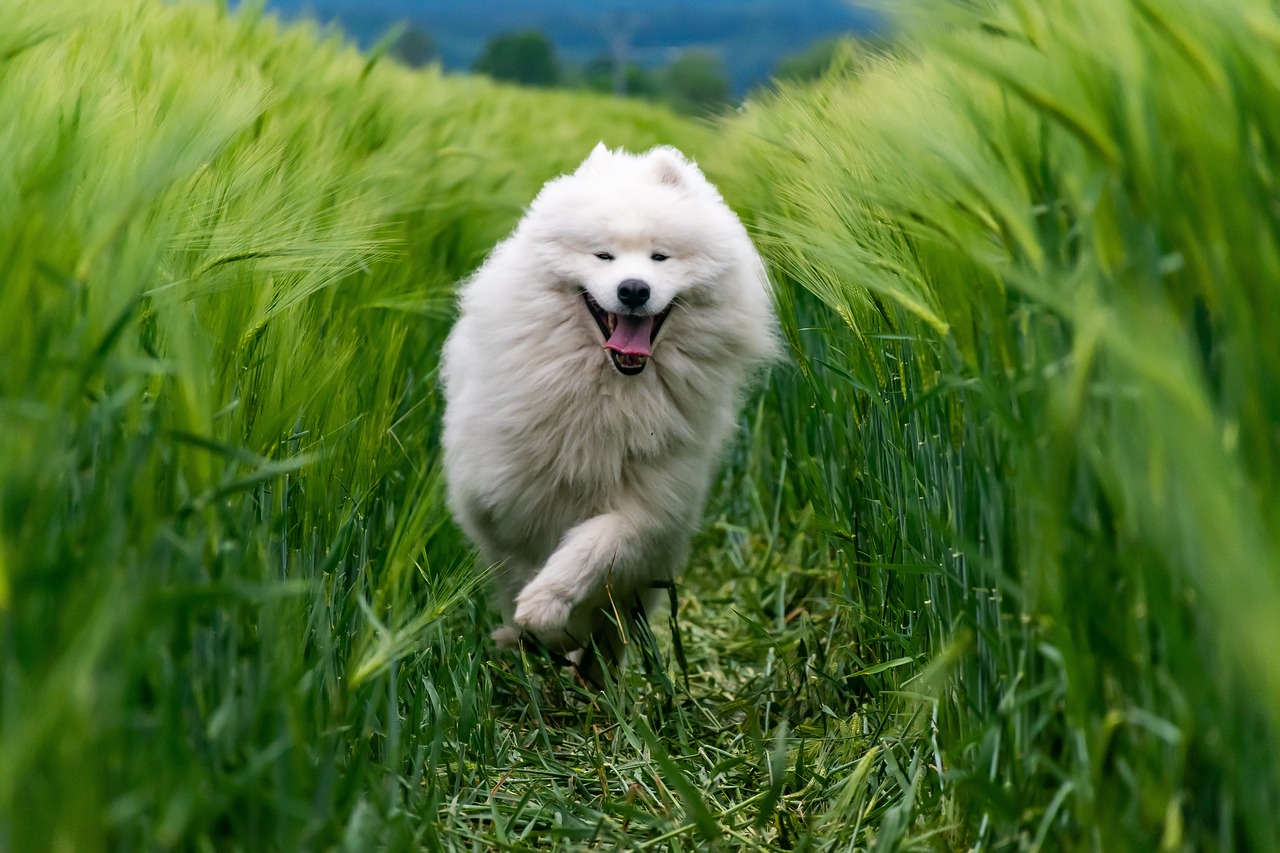
Choosing the Right Time
When it comes to socializing your dog with children, timing is everything. Just like you wouldn’t want to introduce a shy friend to a loud party, your dog deserves a gentle and thoughtful approach. The right moment can make all the difference in creating a positive experience for both your furry friend and the kids involved. So, how do you choose the best time for these introductions? Here are some key factors to consider:
First and foremost, consider your dog's daily routine. Dogs thrive on consistency, and introducing them to children during their usual playtime or after a good walk can set the stage for a successful interaction. If your dog is energetic and excited, they may be more receptive to meeting new friends. On the flip side, if your dog is tired or anxious, it’s probably best to wait for a more suitable moment.
Next, think about the children's mood and energy levels. Children can be unpredictable, and their excitement can easily overwhelm a dog. Aim for a time when the kids are calm and ready to learn about interacting with your pet. This could be after a quiet activity, like reading or drawing, rather than during a raucous play session. By choosing a peaceful moment, you can help ensure that both your dog and the children feel comfortable and safe.
Another important aspect to consider is the environment. A noisy, chaotic place can send your dog into a tailspin of anxiety. Instead, opt for a calm, familiar setting where your dog feels secure. This could be your backyard, a quiet park, or even inside your home. The goal is to create a serene atmosphere that allows for a smooth introduction. You might even want to have a few toys or treats on hand to help ease any tension—after all, who can resist a tasty snack?
Finally, don’t forget to observe the dog's body language before, during, and after the introduction. Look for signs that indicate whether they’re ready to engage or if they need more time to adjust. Signs like wagging tails, relaxed ears, and playful bounces suggest a readiness to interact, while tucked tails, stiff bodies, or excessive panting may signal discomfort. By paying attention to these cues, you can adjust your approach accordingly and ensure a more enjoyable experience for everyone involved.
In summary, choosing the right time to introduce your dog to children involves careful consideration of your dog's routine, the children's moods, the environment, and your dog's body language. By being mindful of these factors, you can create a safe and enjoyable atmosphere that fosters positive interactions between your dog and the little ones in your life.
Assessing Your Dog's Temperament
When it comes to introducing your dog to children, understanding your furry friend’s temperament is absolutely essential. Just like humans, dogs have unique personalities that can significantly influence how they behave around kids. Before making that important introduction, take a moment to observe your dog's behavior in various situations. Is your dog generally calm and friendly, or does he tend to be more anxious and reserved? These traits will play a pivotal role in determining how well your dog interacts with children.
One of the first things to consider is your dog's energy level. High-energy dogs may be more playful and enthusiastic, which can be a great match for active children. However, if your dog is more laid-back, he might prefer quieter interactions. It's crucial to match the energy levels of both your dog and the child to ensure a harmonious encounter. For instance, if your child is running around excitedly, a more relaxed dog might feel overwhelmed and retreat to a corner. This could lead to a negative experience for both parties.
Another key factor is socialization history. Has your dog been exposed to children before? If so, how did those interactions go? Dogs that have had positive experiences with kids are likely to be more comfortable around them. Conversely, if your dog has had negative encounters, it might be wise to take things slow and gradually acclimate him to the presence of children. You can also consider the breed of your dog; some breeds are naturally more tolerant and friendly towards kids, while others may be more reserved or protective.
To help assess your dog's temperament, look for specific behavioral traits. Here are a few to keep an eye on:
- Curiosity: Does your dog show interest in new people, including children? A curious dog is often more willing to engage.
- Playfulness: Is your dog eager to play? Playful dogs tend to have a more positive outlook on interactions.
- Calmness: A dog that remains calm in various situations is more likely to handle the excitement of children well.
- Signs of Stress: Watch for signs of stress such as panting, whining, or attempting to escape. These signals indicate that your dog may not be ready for interaction.
By taking the time to understand your dog's temperament, you can create a more enjoyable experience for everyone involved. Remember, it's all about ensuring that your dog feels safe and comfortable. After all, a happy dog is more likely to engage positively with children, leading to a fun and loving interaction that everyone will cherish.
Q: How can I tell if my dog is ready to meet children?
A: Look for signs of curiosity and playfulness. If your dog seems eager to engage and is calm, he may be ready for introductions. However, if you notice signs of stress, it’s best to wait.
Q: What should I do if my dog shows anxiety around children?
A: If your dog exhibits anxious behaviors, consider gradual exposure to children in a controlled environment. Consult with a professional dog trainer or behaviorist for tailored strategies.
Q: Can all dogs get along with children?
A: Not all dogs are naturally inclined to be around children. It's important to assess your dog's temperament and past experiences with kids before introducing them.
Q: How do I teach my child to interact safely with dogs?
A: Educate your child on approaching dogs calmly and respectfully, avoiding sudden movements, and always asking for permission before petting a dog.
Signs of Anxiety
Understanding the in your dog is crucial for ensuring a safe and enjoyable interaction with children. Just like humans, dogs can feel nervous or overwhelmed, especially in new situations. It’s important to be vigilant and recognize these signs, as they can help you manage introductions more effectively. Some common signs of anxiety include:
- Excessive panting: If your dog is panting heavily, even in a cool environment, it may be a sign of stress.
- Tucked tail: A tail that is tucked between the legs indicates fear or discomfort.
- Whining or barking: Vocalizations can be a way for dogs to express their anxiety or seek attention.
- Avoidance behavior: If your dog is trying to escape or hide, it’s a clear signal that they are not comfortable.
- Yawning or licking lips: These behaviors can indicate stress, even if your dog is not tired or hungry.
When you notice any of these signs, it’s essential to take a step back and reassess the situation. For instance, if your dog is showing signs of anxiety, consider creating a calm environment where they can feel secure. This might include setting up a quiet space with their favorite blanket or toys, allowing them to retreat if they feel overwhelmed. Remember, forcing your dog to interact with children when they are anxious can lead to negative experiences for both parties.
Additionally, it’s important to note that anxiety can manifest differently in each dog. Some may become more withdrawn, while others might exhibit more overt signs of distress. By being observant and patient, you can help your dog feel more comfortable and confident during interactions with kids. Always prioritize your dog’s emotional well-being, and don’t rush the introduction process. With time and understanding, your dog can learn to enjoy the company of children.
Signs of Playfulness
Recognizing the in your dog is essential, especially when preparing them to interact with children. A playful dog is often more adaptable and open to engaging with little ones, making for a delightful experience for both parties. So, what should you look for? Well, playful dogs often exhibit a variety of behaviors that signal their readiness to have fun!
One of the most common signs is the classic play bow. This is when your dog lowers their front legs while keeping their rear end up in the air, almost as if they're inviting you to join in a game. It’s a universal doggy invitation to play! If your dog is bouncing around, wagging their tail vigorously, and displaying a relaxed posture, these are all good indicators that they’re feeling playful. In contrast, if their tail is tucked or their body is tense, they may not be ready for interaction.
Additionally, you might notice your dog engaging in playful behaviors such as chasing their tail, rolling on the ground, or even fetching toys. These actions not only show that they’re in a good mood but also indicate that they’re comfortable in their environment. When a dog is playful, they often exhibit a sparkle in their eyes and a lightness in their movements, which can be incredibly infectious, especially for children who thrive on energy and enthusiasm.
Moreover, it’s important to note that playful interactions should be reciprocated. If your dog approaches children with a wagging tail and a playful demeanor, it’s a great sign! However, it’s equally crucial to ensure that children understand how to engage with a playful dog. Teaching kids to respond to a dog’s playfulness with gentle movements and appropriate excitement can help foster a positive relationship. Remember, playtime should always be fun and safe for everyone involved!
To help you recognize these signs more clearly, here’s a quick overview of common playful behaviors:
- Play Bow: Front legs down, rear end up.
- Tail Wagging: A fast, loose wag often indicates happiness.
- Jumping Around: Bouncing or prancing can show eagerness to play.
- Bringing Toys: If your dog brings a toy to you, they’re inviting you to join the fun!
- Vocalizations: Playful barking or whining can indicate excitement.
In conclusion, understanding these signs of playfulness can significantly enhance the interactions between your dog and children. By recognizing when your dog is ready to play, you can create a joyful environment that encourages bonding and fun. Always remember, a playful dog is a happy dog, and this happiness can be contagious!
Here are some common questions about socializing dogs with children:
- How can I tell if my dog is too anxious to play? Look for signs like a tucked tail, avoidance behavior, or excessive panting. If you notice these signs, it might be best to give your dog some space.
- What should I do if my dog doesn’t seem interested in playing with kids? It’s important to respect your dog’s feelings. You can try engaging them with their favorite toys or activities, but don’t force interactions.
- How can I encourage my dog to be more playful? Regular exercise, socialization with other dogs, and positive reinforcement can help boost your dog’s playfulness.
Preparing Children for Interaction
When it comes to introducing your dog to children, preparation is key. It’s essential to ensure that kids understand how to approach and interact with dogs safely. After all, we want every interaction to be a positive experience, right? So, how do we achieve that? First, it’s important to educate children on the basics of dog behavior and body language. Kids are naturally curious and may not be aware of how their actions can affect a dog’s comfort level. For instance, a dog might feel threatened if a child approaches too quickly or makes loud noises. Teaching children to approach dogs calmly and respectfully sets the stage for a successful introduction.
One effective way to prepare children is through role-playing scenarios. You can act out different situations where they might meet a dog, guiding them on what to do and what not to do. For example, you could demonstrate how to gently extend a hand for sniffing, which is a crucial first step in dog interaction. Additionally, explain the importance of respecting a dog’s space. Just like humans, dogs have their personal bubble, and it’s vital for kids to understand that invading this space can make a dog feel uncomfortable or anxious.
Moreover, it’s beneficial to discuss with children the signs of a happy dog versus an unhappy or stressed one. Here’s a quick rundown of what to look for:
- Happy Dog: Wagging tail, relaxed body, playful demeanor.
- Unhappy Dog: Tucked tail, growling, showing teeth, or attempting to move away.
By teaching kids these signals, they’ll be better equipped to gauge how a dog is feeling, which can prevent potential accidents. It’s also crucial to emphasize that they should never disturb a dog while it’s eating, sleeping, or caring for its puppies. These are times when a dog may feel particularly protective or irritable.
Another important aspect of preparation is instilling a sense of responsibility in children. Encourage them to take part in the dog’s care routine, whether it’s feeding, walking, or simply playing. This involvement can foster a bond between the child and the dog and help them understand the needs and feelings of their furry friend. As they learn to care for the dog, they’ll also develop a sense of empathy, which is vital for any healthy relationship.
Lastly, always remind children that if a dog shows any signs of distress, they should back off and give the dog some space. Reinforcing these principles will not only help in creating a safe environment but also teach children valuable lessons about respect and kindness towards animals. By preparing kids in this way, we can ensure that every interaction with our canine companions is safe, enjoyable, and enriching for both parties involved.
Q: How can I tell if my dog is ready to meet children?
A: Look for signs of playfulness, such as wagging tails and an excited demeanor. If your dog seems relaxed and curious, they are likely ready for interaction.
Q: What should I do if my dog shows signs of anxiety around children?
A: If your dog is anxious, it’s best to create a calm environment, allow them to retreat to their safe space, and gradually introduce them to children in a controlled manner.
Q: How can I teach my child to interact with dogs safely?
A: Educate your child about dog body language, the importance of approaching calmly, and respecting the dog’s boundaries. Role-playing can also be a fun and effective way to reinforce these lessons.
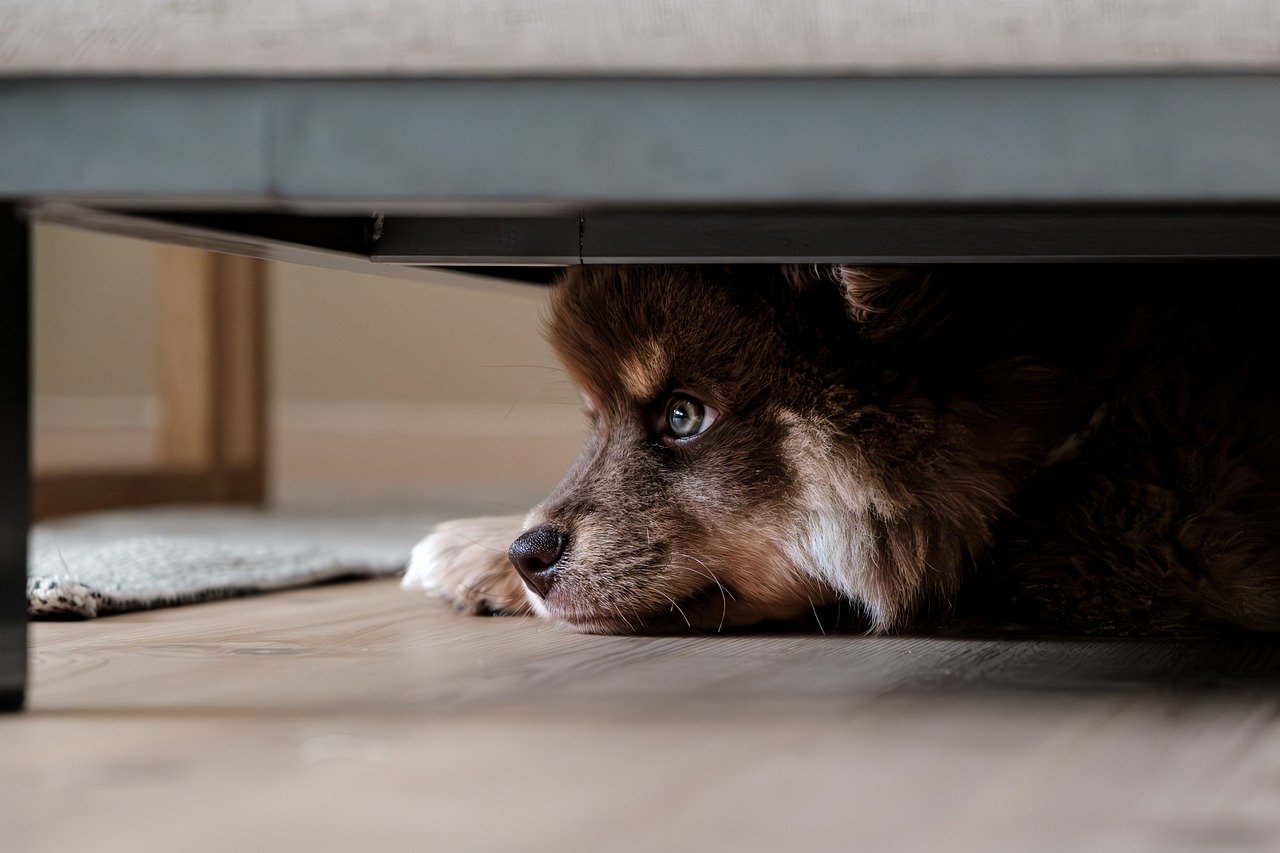
Supervised Introductions
When it comes to introducing your dog to children, supervision is absolutely essential. This isn't just about keeping an eye on things; it's about creating a safe and positive environment for both your furry friend and the kids. Imagine this scenario: your dog is meeting a child for the first time. The excitement is palpable, but without supervision, things could quickly go awry. By being present, you can step in if necessary, ensuring that both parties feel comfortable and secure.
First off, it’s important to choose a quiet space for the introduction. A busy park or a loud room can be overwhelming for both your dog and the child. Instead, opt for a familiar area where your dog feels at ease. This could be your living room or backyard. The idea is to minimize distractions and create a calm atmosphere. You might even consider using a baby gate to create a physical barrier at first, allowing your dog to observe the child from a distance before they make direct contact.
As you facilitate the introduction, remember to keep the interaction positive. Use treats and praise to reward your dog for calm behavior. For instance, if your dog sits quietly while the child approaches, offer a treat and a few encouraging words. This not only reinforces good behavior but also helps your dog associate children with positive experiences. On the flip side, if your dog shows signs of distress—like whining or trying to hide—it's crucial to step back and reassess the situation. Forcing an interaction can lead to negative associations.
Additionally, it's vital to teach children how to approach dogs safely. Encourage them to ask permission before petting the dog and to approach slowly. Explain the importance of letting the dog sniff their hand first before making any sudden movements. This can help the dog feel more secure and reduce anxiety. You might say something like, "Think of it as a handshake; dogs like to say hello too!"
Finally, always be ready to intervene if things don’t go as planned. If either the dog or the child seems uncomfortable, it’s best to separate them and try again later. This is a learning experience for everyone involved, and patience is key. Remember, the goal is to foster a positive relationship between your dog and children, which will take time and careful management.
- How long should I supervise the introductions? It's best to supervise until you are confident that both your dog and the child are comfortable with each other. This could take several meetings.
- What should I do if my dog acts aggressively? If your dog shows signs of aggression, calmly remove the child from the situation and give your dog some space. Consult a professional trainer if aggression persists.
- Can I introduce my dog to multiple children at once? It's generally better to introduce your dog to one child at a time to avoid overwhelming them. Once your dog is comfortable, you can gradually introduce more children.
Creating a Safe Space
When it comes to socializing your dog with children, creating a safe space is not just a good idea; it’s essential. Think of it as a cozy retreat for your dog, a sanctuary where they can feel secure and relaxed amidst the excitement of new interactions. Just like we all need our personal space when things get a bit overwhelming, dogs benefit from having a designated area where they can retreat if they feel anxious or overstimulated. This safe space should be easily accessible and familiar to your dog, providing them with a sense of comfort during the introduction process.
To create this sanctuary, consider the following elements:
- Location: Choose a quiet area of your home that is away from the hustle and bustle. This could be a corner of a room or a separate room entirely.
- Comfort: Equip the space with your dog’s favorite blanket, toys, and perhaps a bed. This familiar scent and environment can help soothe their nerves.
- Accessibility: Make sure your dog can easily access this space whenever they need to. If needed, use baby gates or pet doors to allow them to move freely.
Once you’ve established this safe space, it’s important to introduce the concept to your dog before any interactions with children take place. Spend some time encouraging your dog to explore and relax in this area. You might even want to reward them with treats or praise when they use this space voluntarily. This positive reinforcement can help them associate the area with safety and comfort.
During the introduction phase, if your dog shows signs of stress or discomfort, gently guide them to their safe space. This not only helps your dog feel more at ease but also teaches children the importance of respecting a dog's need for personal space. Remember, patience is key! Just like a shy kid at a party, your dog may take some time to warm up to the idea of interacting with children. By allowing them to retreat when needed, you’re fostering a positive environment for both your dog and the kids.
In summary, creating a safe space for your dog is a fundamental step in ensuring a successful introduction to children. It provides them with a sanctuary where they can feel secure, ultimately leading to more positive experiences. With a little preparation and understanding, you can help your dog navigate these new interactions with confidence.
Q: How can I tell if my dog is comfortable in their safe space?
A: Look for signs such as relaxed body language, lying down, or playing with their toys. If your dog frequently returns to this space, it’s a good indicator that they feel secure there.
Q: What should I do if my dog refuses to go to their safe space?
A: Encourage them gently with treats or toys, but don’t force them. You can also try making the space more inviting by adding their favorite items.
Q: Is it necessary to have a safe space if my dog is generally friendly?
A: Yes! Even friendly dogs can feel overwhelmed in new situations. A safe space provides them with an option to retreat and recharge if needed.
Monitoring Body Language
When it comes to introducing your dog to children, one of the most important things to focus on is body language. Just like humans, dogs communicate a lot through their posture, facial expressions, and movements. So, how do you know if your furry friend is feeling comfortable or stressed around kids? Well, let's break it down!
First things first, you need to be observant. Dogs are masters at hiding their discomfort, but there are subtle signs you can look for. For instance, if your dog’s ears are pinned back, they might be feeling anxious. On the flip side, if their tail is wagging high and fast, they’re likely excited and ready for some fun! It's essential to differentiate between a relaxed dog and one that’s on edge. A relaxed dog will have a loose body posture, while a tense dog may stand rigid or keep their tail tucked.
Moreover, pay attention to the interaction between your dog and the children. Are the kids being too loud or moving too quickly? This can cause your dog to feel overwhelmed. If you notice your dog backing away or trying to escape, it’s a clear sign they need a break. In these moments, it's crucial to intervene gently and redirect the children’s energy. You might say something like, “Let’s give Fido some space for a bit!” This not only helps your dog but also teaches children about respecting boundaries.
Another key aspect to monitor is the dog's facial expressions. Dogs can express a range of emotions through their eyes and mouth. A relaxed dog may have soft eyes and a slightly open mouth, while a dog that’s feeling threatened might show bared teeth or a hard stare. If you see these signs, it’s time to step in and create a more calming atmosphere. You can do this by engaging the kids in quieter activities or providing your dog with a safe retreat.
To help you better understand the signs to watch for, here’s a quick reference table:
| Dog Behavior | Interpretation |
|---|---|
| Ears pinned back | Feeling anxious or scared |
| Wagging tail (high and fast) | Excited and happy |
| Backing away | Needs space or feels threatened |
| Soft eyes and relaxed mouth | Feeling comfortable |
| Bared teeth or hard stare | Feeling threatened or aggressive |
In conclusion, monitoring body language is not just a task; it’s an essential part of ensuring a harmonious interaction between dogs and children. By being aware of your dog's signals and teaching children how to behave around pets, you can create a safe and enjoyable environment for everyone involved. Remember, patience is key! With time and practice, both your dog and the kids can learn to coexist happily.
- How can I tell if my dog is comfortable around children? Look for signs of relaxation such as a wagging tail, soft eyes, and a loose body posture.
- What should I do if my dog shows signs of anxiety? It's best to remove your dog from the situation and give them a quiet space to relax.
- Can all dogs be socialized with children? Not all dogs are suitable for interaction with children. Assessing your dog's temperament is crucial.
- How can I teach my kids to interact safely with dogs? Educate them on approaching dogs calmly, avoiding sudden movements, and respecting the dog's space.
Frequently Asked Questions
- What is the best age to introduce my dog to children?
Introducing your dog to children can happen at any age, but the earlier, the better! Puppies are typically more adaptable and open to new experiences, making them easier to socialize with kids. However, adult dogs can also learn to interact safely with children if introduced properly.
- How can I tell if my dog is comfortable around children?
Look for signs of relaxation, such as a wagging tail, a loose body posture, and a willingness to approach. If your dog is playful and engages in gentle interactions, that's a great sign! On the flip side, if they exhibit signs of stress, like tucked tails or excessive panting, it might be time to reassess the situation.
- What should I do if my dog shows signs of anxiety around children?
If your dog appears anxious, it's essential to create a calm environment. Consider giving them a safe space to retreat to and move slowly during introductions. Using positive reinforcement, like treats or praise, can help your dog associate children with good experiences!
- How can I prepare my children to interact with my dog?
Teach your children to approach dogs calmly and respectfully. Encourage them to use a soft voice, avoid sudden movements, and let the dog come to them first. It's also crucial to explain the importance of respecting the dog's space and recognizing when the dog wants to be left alone.
- What are some common signs of playfulness in dogs?
Playful dogs often exhibit behaviors like play bows, wagging tails, and even vocalizations like barking or whining. They might also bring toys to children or engage in gentle nudging. These signs indicate that your dog is ready for some fun interaction!
- How do I ensure safe interactions between my dog and children?
Always supervise interactions between your dog and kids. Set clear boundaries, and make sure both parties know the rules. If you notice any signs of discomfort from either side, be ready to intervene and separate them if necessary.
- What should I do if my dog is too excited around children?
If your dog is overly excited, try to redirect their energy. Engage them in a game or provide them with a toy to focus on. Teaching commands like "sit" or "stay" can also help manage their excitement levels during interactions.
- Can I train my dog to be more tolerant of children?
Absolutely! Training can significantly improve your dog's tolerance and comfort level around children. Use positive reinforcement techniques to reward calm behavior and gradually expose your dog to children in controlled settings.









